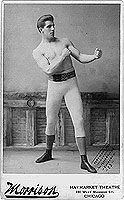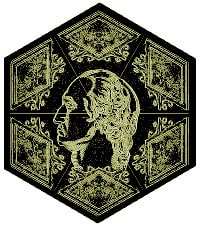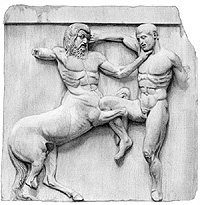Chinese dude's take on Eastern Woodlands combat
Inbox
mcorman
Fri, Dec 27, 2024, 10:02 PM
to me
link › youtu.be/4cNYgoRhPho
link › youtu.be/hy3jY90mLSY
The good reader is interested in the writer’s opinion of a Chinese video contemporary on Eastern Woodland war clubs. The writer is unable to view the videos but is keen on the subject. Recently the spiked ball maple war club and the musket stock war club, also spiked and fitted with dagger blades, have been popularly depicted in graphic and tactical recreations. From Muzzle Loader Magazine to Cold Steel “trainers” made of synthetic molds. I have handled some of these and they are totally impractical for combat in which there is resistance.
There were no such war clubs among western tribes. There were light hafted stone-headed clubs and short hand clubs with flexible hafts. Knocking a hole in the head is great combat sense in action. Fighting much above the tree line among stone, the Inca warriors had stone and bronze club heads mounted on rope and whirled.
Tecumseh had war club which he used with a speed that was hard to counter. This would have been more like an Irish walking stick, or a Zulu fighting stick. The common term for a light hafted club with a round ball on the end is a cudgel. English stick-fighting was called cudgeling.
When the French landed in the Great Lakes and took on the Mohawks, who lived in Nordic style long houses of a type out of use in Europe for 400 years and worshiped a thunder god, these warriors wore wooden breast plates, fought behind wooden shields, and used heavy war clubs and stone-headed axes, even the occasional stone sword. The war ax and hammer are of great use in shield combat. For stripping and tilting enemy shields. But once the French blasted the Mohawks with muskets the tribe went to lighter fighting, skirmishing, with lighter clubs, eventually guns and with English hatchets.
Indeed, the English trade tool or hatchet, not balanced for fighting, became so much the common tool of frontier warfare in Indian hands, that to bury the hatchet became the term for ending war gripes. By the 1670s, New England tribes of the Algonquin language were using hatchets to kill at close range, mostly by hitting the enemy person in the head with the square back, so as not to ruin the useful blade for camp work.
Even the hatchet was a bit heavy for long range warfare in which foot speed over great distances was required. The greater weight must be devoted to the musket and shot, the primary weapon. This is the situation of all missile armed troops of antiquity, that the weight of missile shield [pelte] and missiles must be greater than that of back up weapons. So, two innovators came up with the same solution 2000 years apart: the Scythians and, William Penn?
With the primary weapon a bow with many arrows, the long hafted light war ax, easily recovering from a stroke and a “rodondo” roll of the wrist became the go to weapon of the archer horse lords of Asia until sword steel became highly advanced in late antiquity.
William Penn, in 1701, invented the tomahawk, as a trade item, in consultation with allied Lenape chiefs. We think of it as a throwing weapon, as it is that light. But that is a sport. The use of this light war ax was for smoking in council and knocking holes in heads. It was handy enough to recover from missed strokes and had the advantage of the ax, which is binding upon heavier weapons, such as the musket in Penn’s time.
The ax figured prominently in some battle scenes of the Iliad, is shown on the Alexander Sarcophagus, was used by the Carduchi, or Kurds [mountain people], was used to cleave Alexander and nearly kill him at the Granicus, and was the weapon for which the Labyrinth of Minos at Knossos was named. Labyrinth means “House of the double ax.”
For any folk that must trade and loot for iron, such as the Scythians and Mohawks and Lenape, or who live in mountains, such as the Agriane, Scots, Norse, Inca, Cherokee and Mohawks, far from developed iron industries where only small scale craft forges operate, the ax in war is far cheaper and just as deadly as the sword. Recall the fascines, bundle of rods around an ax, that represented civic concord in ancient Rome, and think of how in times of war, the rods that surround the ax of order can all become ax hafts to deal with external disorder.
Plutarch, the primary source for Alexander’s upbringing, does not bother naming the many experts that were gathered under Aristotle and Alexander’s uncle, Leonidas, to tutor the lad. He does mention that Alexander enjoyed and encouraged running, riding and stick fighting the most, and had little regard for boxing and MMA. This reminds me that boxing, MMA and other martial arts are very barren sources for stick fighting and knife fighting, which are much higher arts in terms of muscle-powered combat. One is more likely to talk a tennis player or hockey player into stick fighting than an MMA or boxing fighter. I have long noted that prowess gained in striking with body parts discourages, in some deep way, most men from engaging in weapon combat.
Alexander, a stick-fighter and promoter, of course, knew this. Xenophon had encouraged sparring with blunt spears from horseback a hundred years earlier. So long as shields are in use, the ax is supreme for breaking ranks, the sword more for slaughtering routed and captive foes and for defending a high value person by his own hand, keeping blade and shield close. The expense of arming with swords for a back country force will favor cleavers or machetes, like the French falchion or Hellenic Macheara for first rate fighters, light axes for fresh levies and volunteers, and the aor, or tapering straight sword, perfect for shield work, to whichever officers will serve as rallying points with larger shields than the pelte. There is ample evidence in Arrian’s subtext that the Balkan mountain nations of Antiquity, like the Kurds, including the Agrianes, Illyrians and Tribalians, used numerous troop types from lightest to heaviest. Therefore, in fleshing out the Agriane order of battle, I have chosen the Cretan, Viking, Scottish and Cherokee [1], peoples from similar terrain practicing hunting, herding and limited farming.
In late Antiquity, Balkan legions under Rome had switched away from the heavy pilium and large shield back to the traditional hurled weapon mainstay and small shield and medium extension weapon for close work. These Illyrian legions became the fulcrum upon which late Rome pivoted from Severus thru Constantine, revisiting an early pivotal role under Alexander.
Methodologically, an extension weapon that strikes through with the head, weather ax or club, must be wielded with a single hand, with recovery achieved through fluid wrist rotation and shoulder orientation. To hold such a weapon in two hands leaves the fighter open to killing thrusts with spear, sword and bayonet and hand smashes and checks with a shield. The war club is most effective when long-handled and light just like it’s son, the battle ax. [2]
…
Notes
-1. First Tribal American dairy farmers.
-2. The paddle is such a handy war club that Captain Sir Richard Francis Burton, in his Book of the Sword, proposed it as one of the origins of the sword, the others being the knife and the war club, which is usually lightened by carving and focusing of impact area rather than weighted at the end. The German war club that got the best of the Gladius at the battle of Tutoberg Forest against Varus, is an excellent example, as is the Japanese boken or waster which is too dangerous to spar with unless armor and control are used by each fighter.











